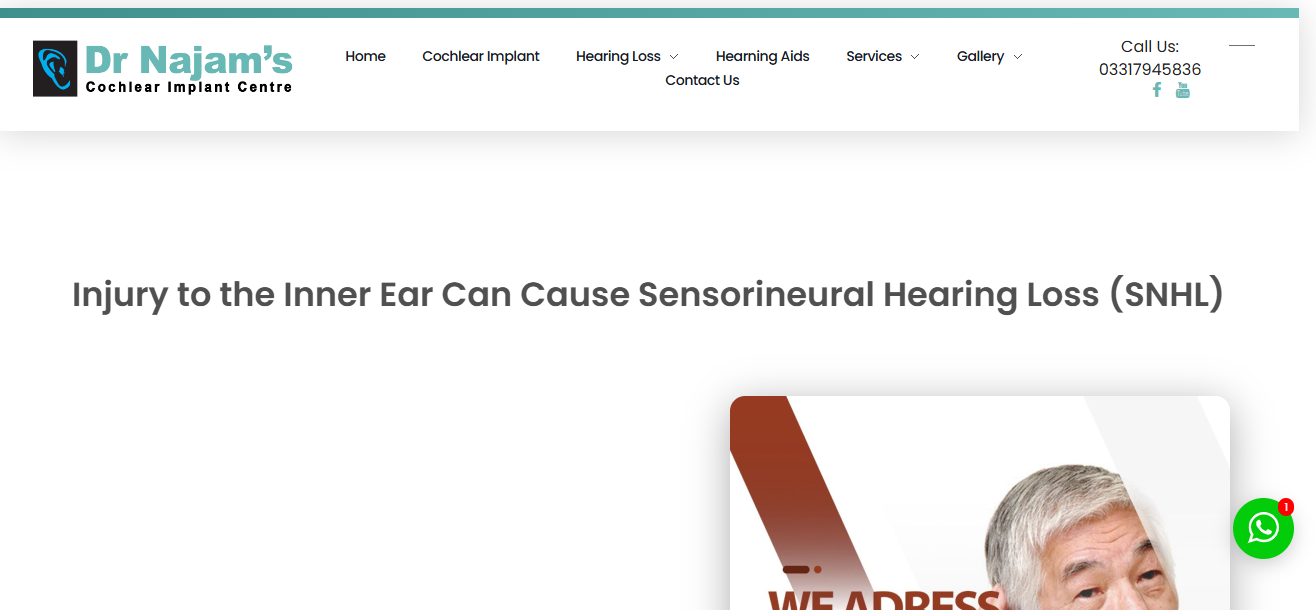Introduction
Sensorineural hearing loss (SNHL) is one of the most common types of hearing impairment, affecting millions of people across all age groups. It occurs due to damage to the inner ear or the auditory nerve, leading to partial or complete loss of hearing. Identifying this type of hearing loss early is crucial for effective treatment. That’s why a sensorineural hearing loss test plays a pivotal role in diagnosing the condition and guiding further steps in hearing rehabilitation.
Understanding Sensorineural Hearing Loss
Sensorineural hearing loss occurs when there is damage to the tiny hair cells in the cochlea or to the auditory nerve pathways in the brain. This damage disrupts the ability to hear certain frequencies clearly, often resulting in muffled or distorted hearing. Unlike conductive hearing loss, which affects the outer or middle ear, SNHL is usually permanent and may require medical devices such as hearing aids or cochlear implants for management.
Some common causes of SNHL include:
- Aging (presbycusis)
- Exposure to loud noises
- Viral infections
- Genetic conditions
- Ototoxic medications
- Head trauma
Why the Sensorineural Hearing Loss Test Is Important
A sensorineural hearing loss test is essential because it not only helps identify the presence of hearing loss but also determines its type and severity. Early testing and diagnosis can significantly improve the quality of life by enabling timely intervention.
In children, early detection is critical to avoid delays in speech, language, and cognitive development. In adults, it helps in choosing appropriate treatment options that may include hearing aids or implants.
Types of Tests Used for Diagnosis
To detect sensorineural hearing loss, audiologists and ENT specialists use a combination of clinical and audiological tests. The most common sensorineural hearing loss tests include:
- Pure Tone Audiometry (PTA):
This test measures a person’s ability to hear different pitches and volumes. It helps determine the degree and type of hearing loss. - Speech Audiometry:
In this test, the patient is asked to repeat words at various sound levels to assess speech recognition ability. - Tympanometry:
Although this test focuses more on middle ear function, it can help rule out conductive hearing loss and support the diagnosis of SNHL. - Otoacoustic Emissions (OAE):
A non-invasive test that checks the function of the cochlear hair cells. It’s especially useful in newborn hearing screening. - Auditory Brainstem Response (ABR):
This test evaluates the hearing nerve pathways to the brain and is useful for infants or individuals who cannot respond to standard hearing tests.
Signs You May Need a Sensorineural Hearing Loss Test
You should consider getting a sensorineural hearing loss test if you or a loved one experience:
- Difficulty hearing conversations, especially in noisy environments
- Frequently asking others to repeat themselves
- Trouble hearing high-pitched sounds like birds or doorbells
- Ringing in the ears (tinnitus)
- Listening to TV or music at higher volumes than usual
- Delayed speech development in children
Treatment Options After Diagnosis
Once SNHL is diagnosed, the treatment plan depends on the cause and severity. While sensorineural hearing loss is typically irreversible, the following management options are available:
- Hearing Aids: Most common for mild to moderate cases
- Cochlear Implants: Recommended for severe to profound hearing loss
- Assistive Listening Devices (ALDs): Such as FM systems and Bluetooth hearing accessories
- Auditory Training and Speech Therapy: Especially in children
In some cases, if the SNHL is caused by infections or sudden trauma, steroids and medications may partially restore hearing.
Preventing Further Hearing Damage
While not all cases of SNHL can be prevented, here are some precautions to help protect your hearing:
- Avoid prolonged exposure to loud noises
- Use hearing protection in noisy environments
- Avoid ototoxic drugs when alternatives are available
- Treat ear infections promptly
- Get regular hearing checkups, especially after age 50
- A sensorineural hearing loss test is the first and most vital step in reclaiming your hearing health. Whether for a child struggling with early speech development or an adult noticing a decline in hearing clarity, timely testing and diagnosis open the doors to impactful treatment options. With technological advances in hearing aids, implants, and therapy, living with SNHL no longer means living in silence. Don’t wait—take the test, and take back your connection to the world of sound.












Leave a Reply